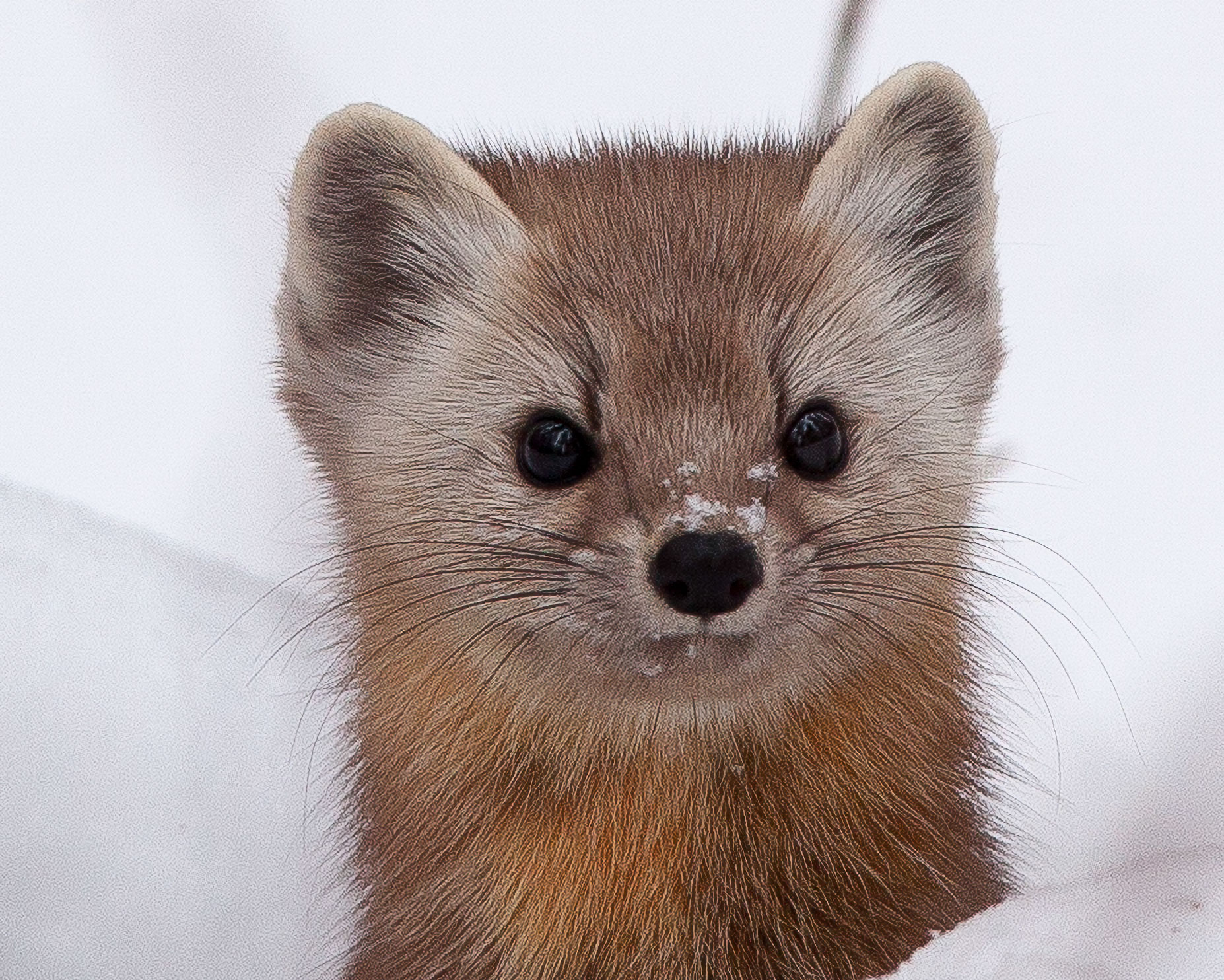
Ontario
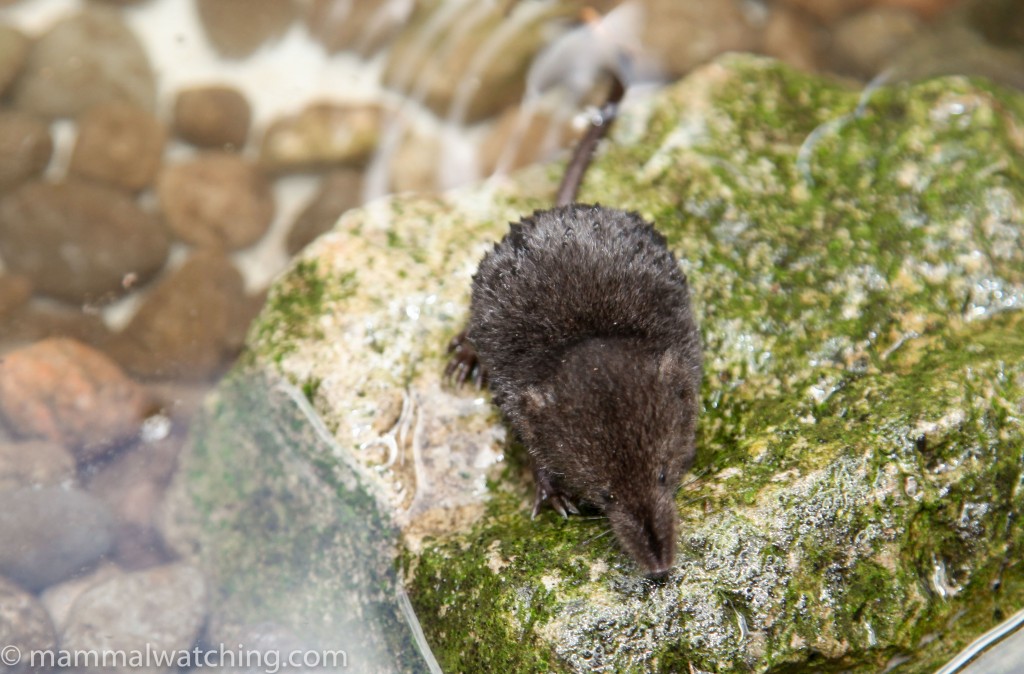
American Water Shrew, Sorex palustris
I’ve been to Ontario several times. During my first visit I spent 12 hours in Ottawa in June 2006 before flying up to Baffin Island. In July 2012 I spent a weekend with Fiona Reid at her place in Milton, just south-west of Toronto for a weekend’s mammaling with my kids. And at the end of March 2013 I went to Algonquin Provincial Park for a weekend in search of Eastern Wolves, returning and succeeding in March 2015. I was back for a day in January 2017 where I saw more Eastern Wolves and my first Fisher.
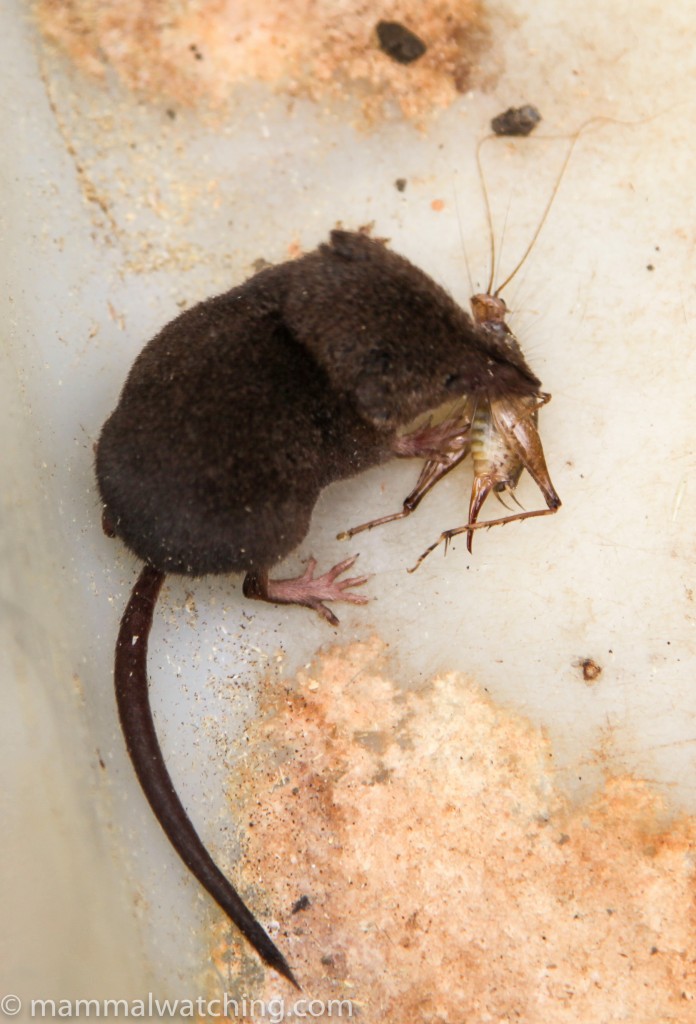
Smoky Shrew, Sorex fumeus
Toronto Area
I’d corresponded for several years with Fiona Reid: mammalogist, artist and author of several field guides. So in 2012 I jumped at the chance to meet her, and escape from the oppressive Manhattan heat, after she invited me and my kids to stay and look for some of the local fauna.
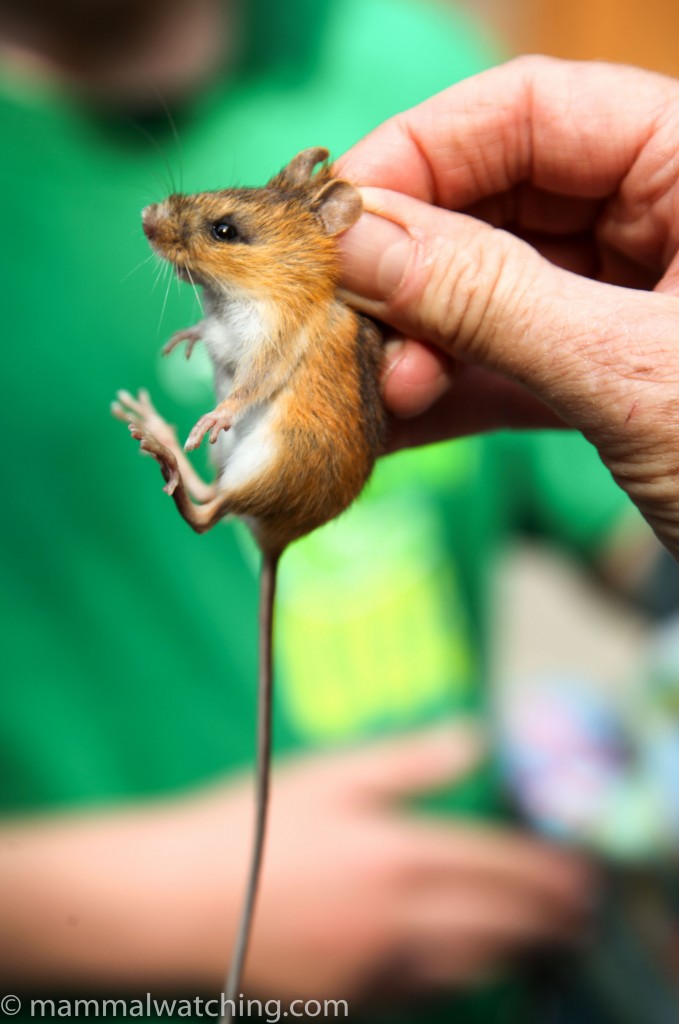
Western Woodland Jumping Mouse, Napaeozapus abietorum
The night we arrived Fiona was catching bats with a local biologists at Hilton Falls Conservation Area, a few minutes from her home in the forest outside of Milton. I didn’t get there til gone 11 p.m. and was delighted to arrive to find Fiona clutching my first confirmed Eastern Small-footed Myotis.
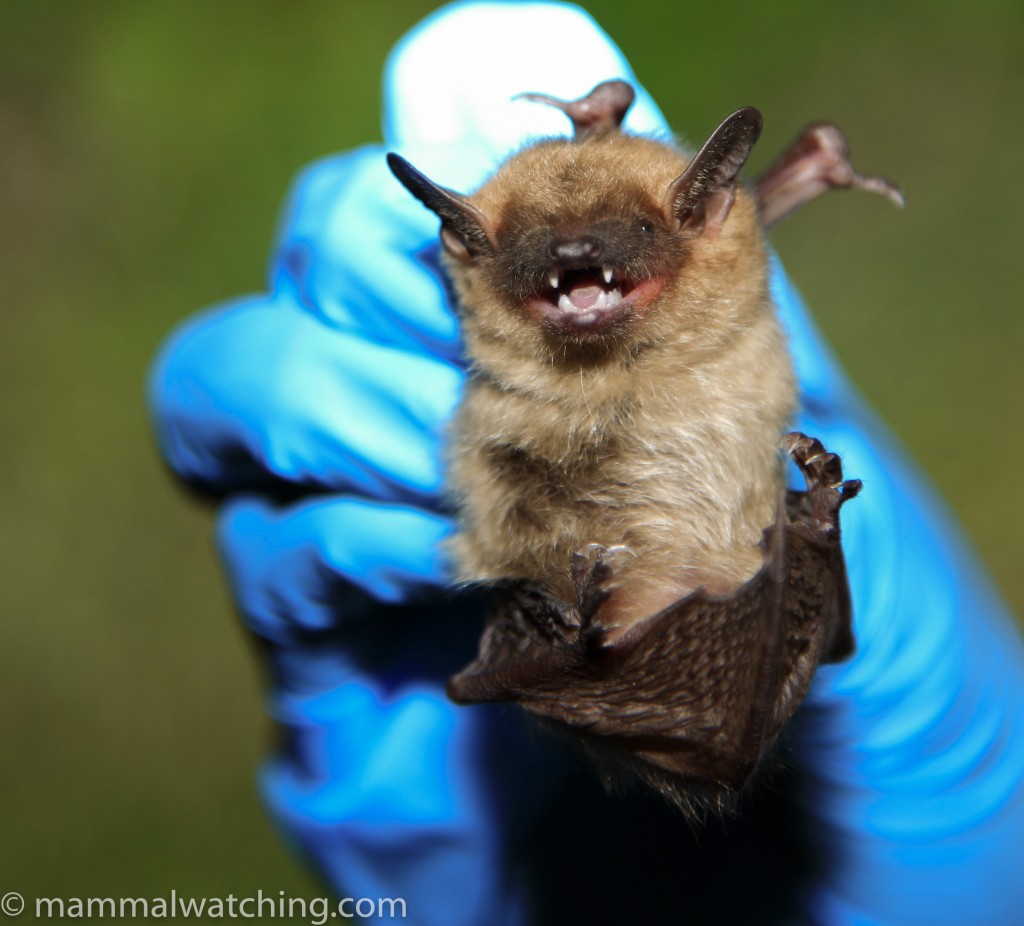
Eastern Small-footed Myotis, Myotis leibii
And I also got my first look at a Northern Myotis in the hand.
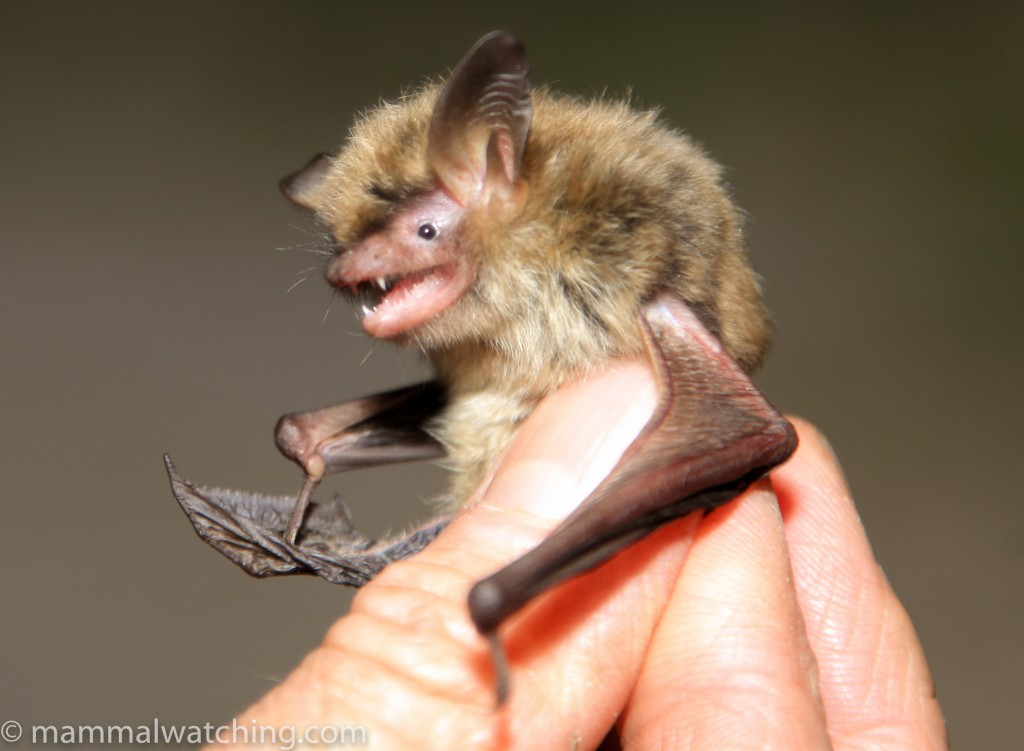
Northern Myotis, Myotis septentrionalis
Other captures that night included a wonderful Eastern Red Bat and a few Big Browns.
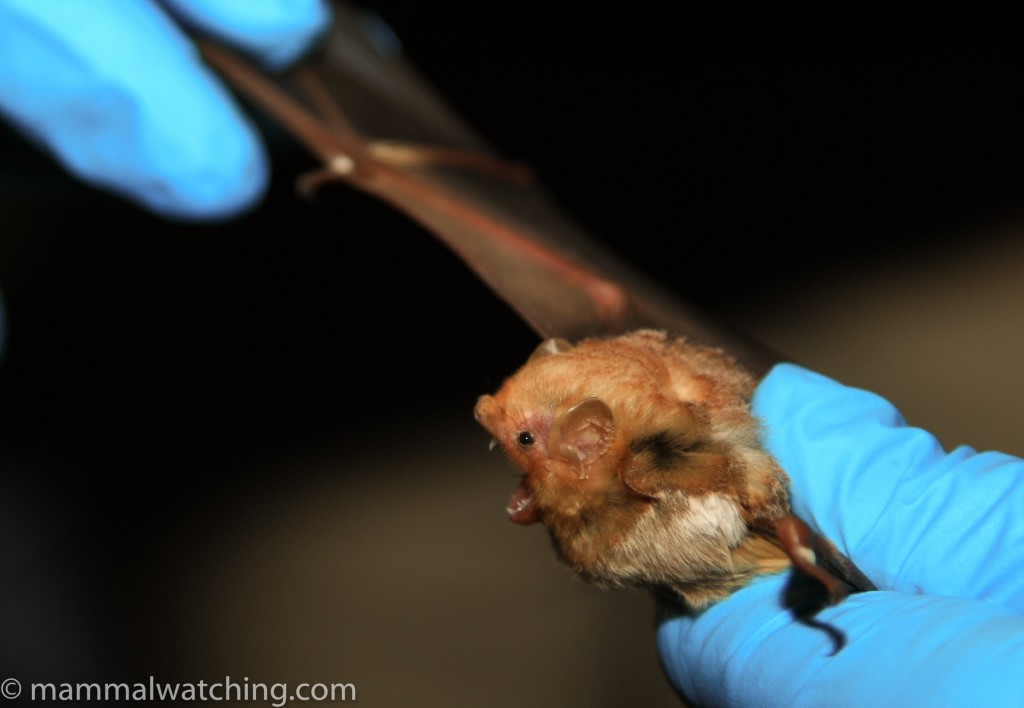
Eastern Red Bat, Lasiurus borealis
Fiona lives in a slab of forest, and the small mammals there were thriving. Over the course of the weekend we caught lots of White-footed Deer Mice, Meadow Voles and a few Northern Short-tailed Shrews as well as some disgruntled Eastern Chipmunks and Red Squirrels.
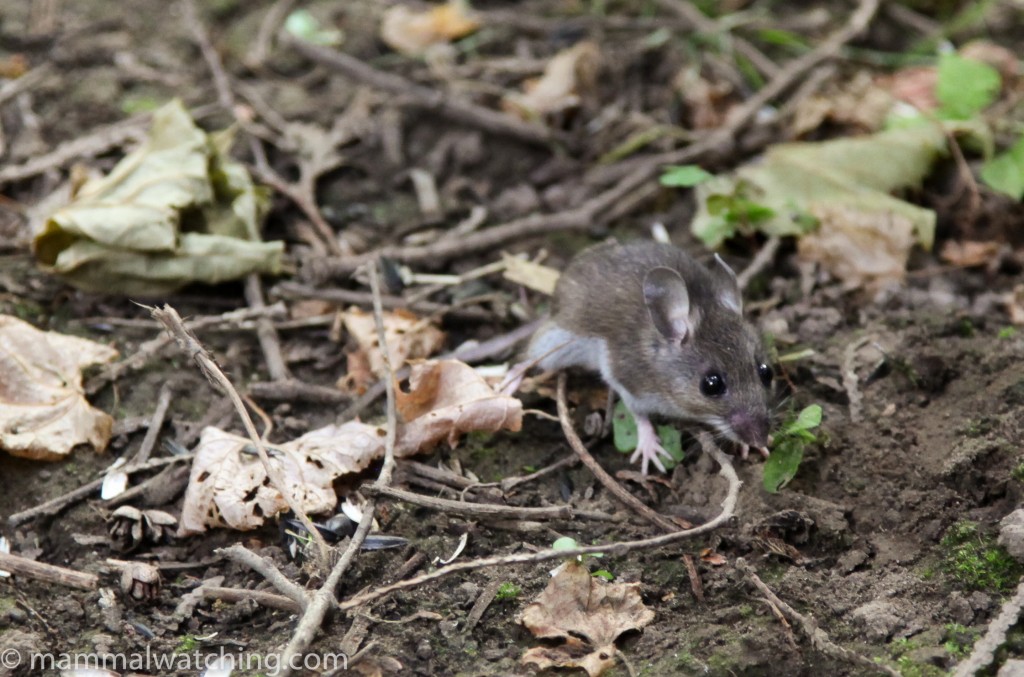
White-footed Deer Mouse, Peromyscus leucopus
More exciting was my first Woodland jumping Mouse. I’d no idea this was such a pretty animal, the white tip to its long tail is not shared by its meadow cousin.
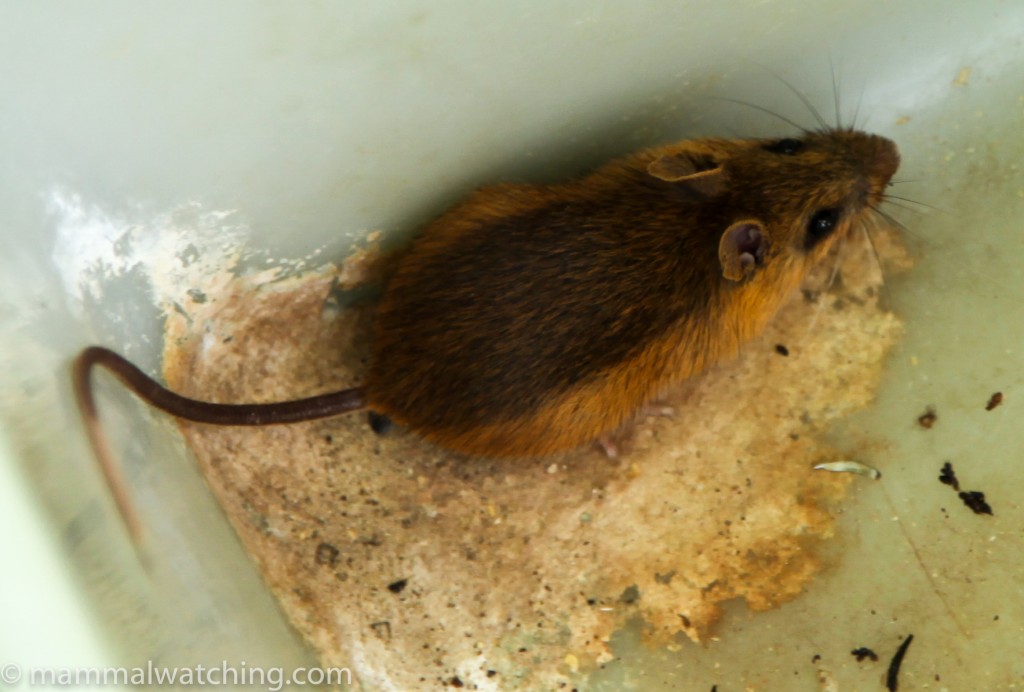
Western Woodland Jumping Mouse, Napaeozapus abietorum
We also caught a couple of Smoky Shrews, another lifer for me.
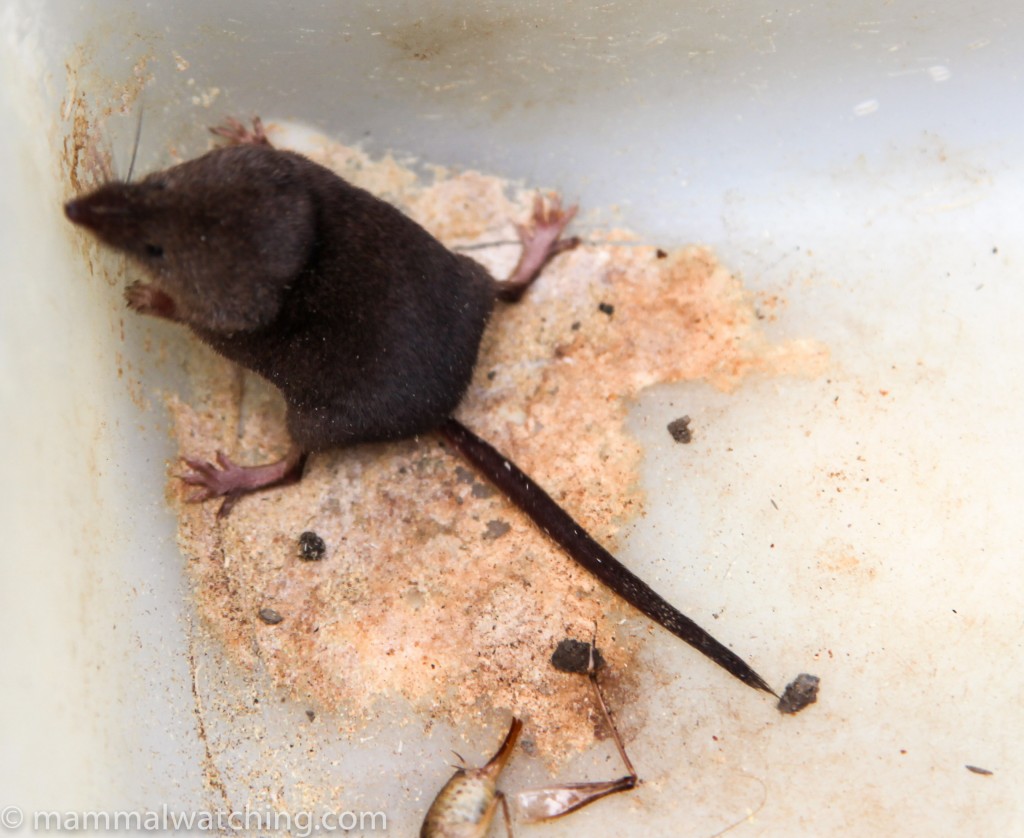
Smoky Shrew, Sorex fumeus
But best of all though was an American Water Shrew: the first time any of us had seen this species.
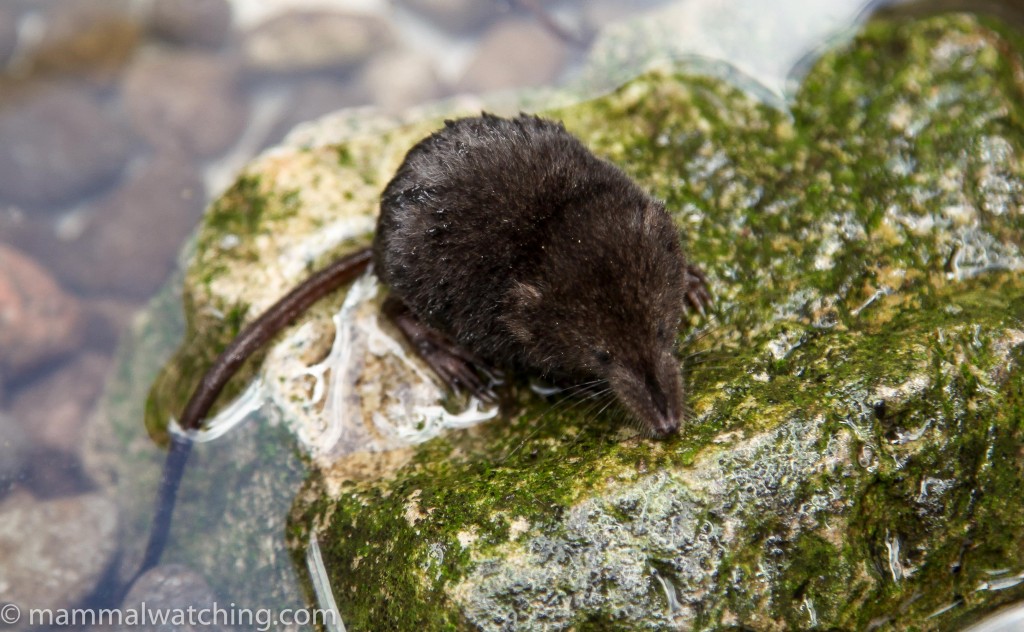
American Water Shrew, Sorex palustris
Meadow Jumping Mice and Masked Shrews are also fairly common in the area but we didn’t find any. We did see numerous frogs, salamanders, moths, deer flies and mosquitoes.
On our last evening we went out for a couple of hours with a spotlight and found a dozen Raccoons (many in trees), an Eastern Cottontail and a few bats, using the bat detector. The low frequency call and views in the spotlight of a coloured wing, confirming at least one was a Hoary Bat, another lifer for me. Though one I really want to see in the hand one day.
Many thanks to Fiona for a really great weekend, which the kids enjoyed as much as I did. If this is an indication of how good her trips are then I’m looking forward to taking one soon!
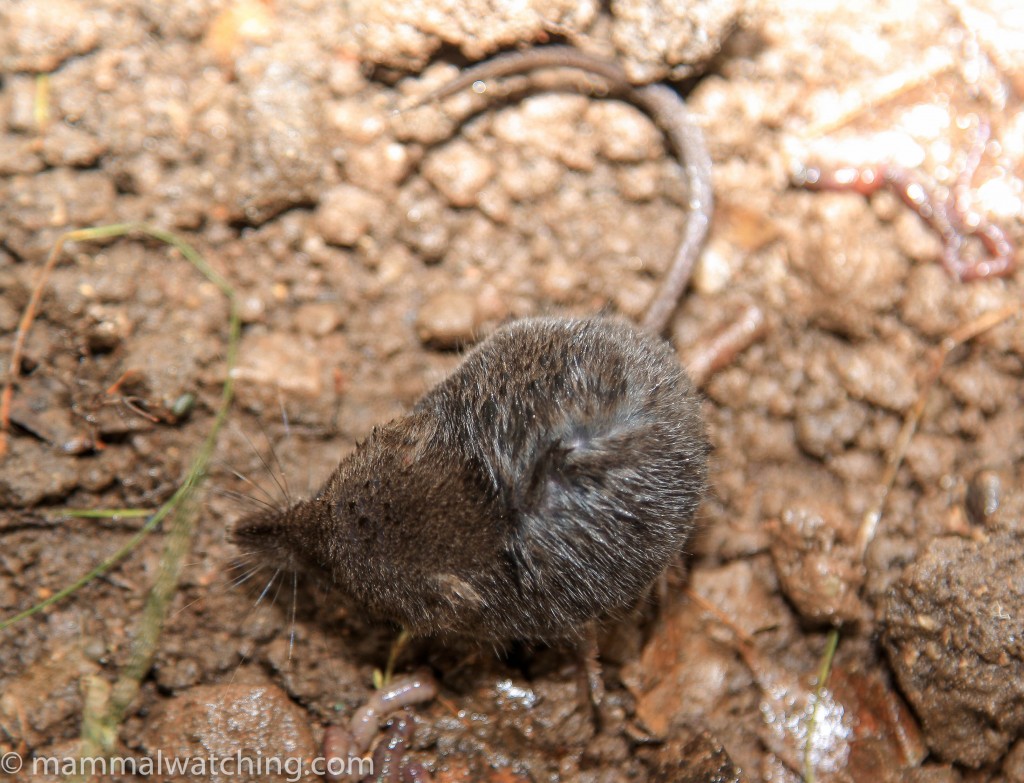
American Water Shrew, Sorex palustris
In March 2015 I spent a couple of hours at sunset at the Luther Marsh Wildlife Management Area, 90 minutes north of Toronto. There is a healthy population of Porcupines here (I saw one) and Fishers too, at least occasionally (I didn’t see one). See my 2015 trip report.
Ottawa
Ottawa is the Groundhog (Woodchuck) capital of the world, or at least it was in June 2006 when I first visited. They are everywhere, from the Parliament outwards. I saw several along the grass of Colonel By Drive, which leads from the airport side of town to the city, I saw more around the university campus and in the lovely Gatineau Park, just over the river in Quebec.
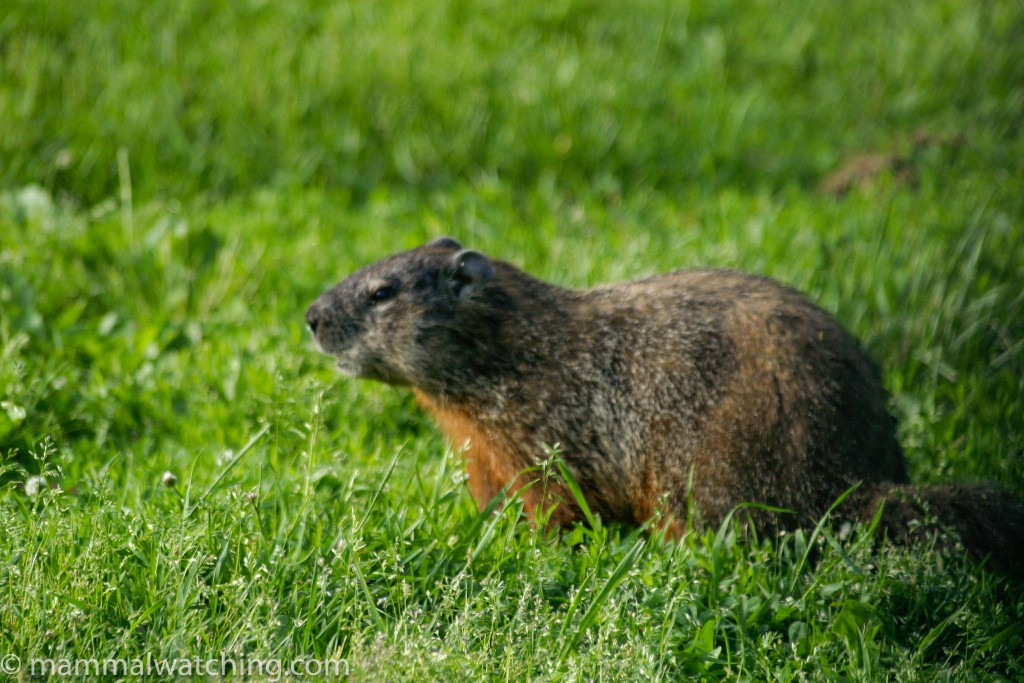
Groundhog, Marmota monax
The local Grey Squirrels seem mainly to be a melanistic form. So don’t get too excited if you see a jet black squirrel. Or at least don’t get as excited as I got when I saw one.
I caught a couple of Deer Mice in the grounds of my hotel near the airport.
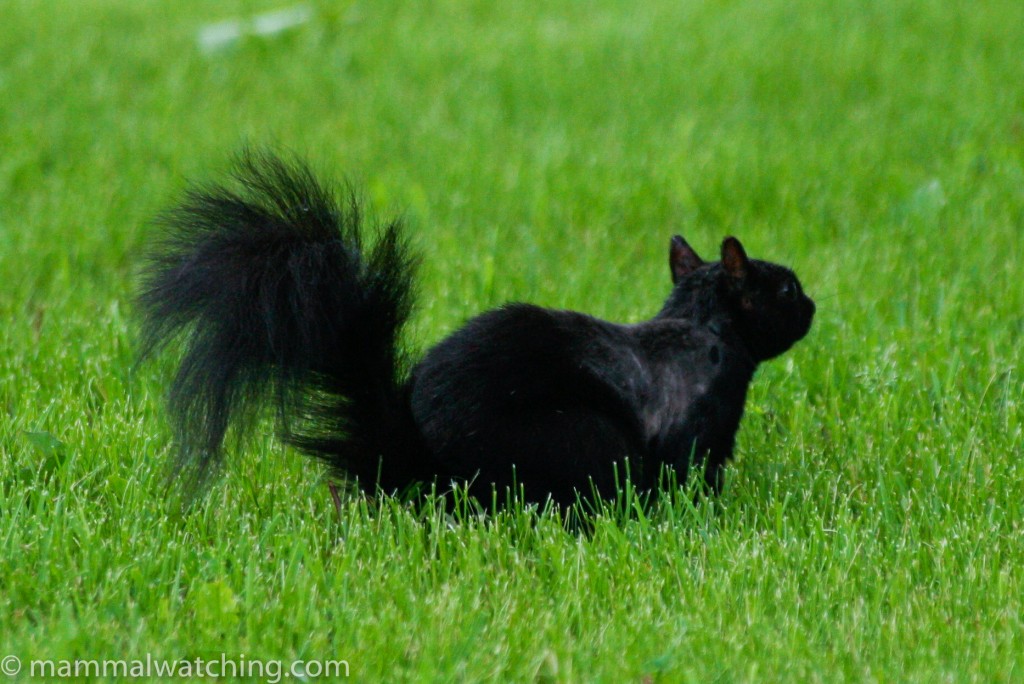
Eastern Grey Squirrel, Sciurus carolinensis
Algonquin Provincial Park
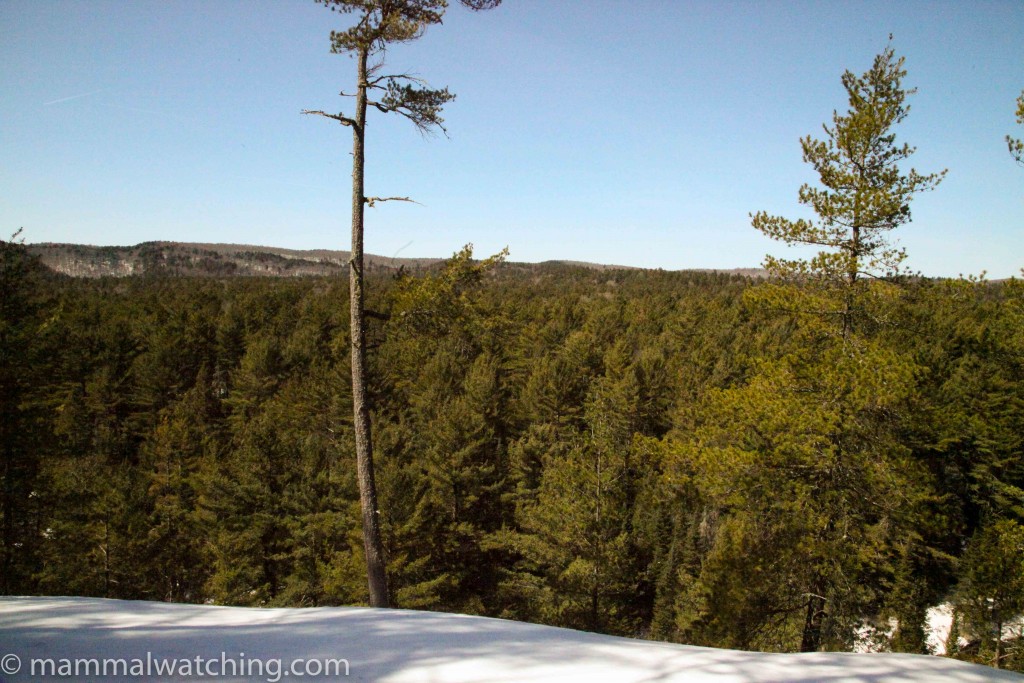
Algonquin Provincial Park, about 4 hours north of Toronto, is home to some wolves, whose taxonomy is still under debate. Most people seem to agree that the Algonquin wolves are rather different to Grey Wolves. They, like Red Wolves, fall somewhere between Coyotes and Canis lupus. But there is more disagreement about whether both Eastern and Red Wolves are separate (full) species, the same species, or both subspecies of Grey Wolf. The IUCN Redlist entry claimed in 2015 that the Red Wolf only exists in the wild near Alligator River in North Carolina and then that there are “suspected Red Wolf-type Wolves” in Algonquin. This 2012 paper concludes that Eastern and Red Wolves are probably different species. But opinions seem to change often.
I went up for a couple of nights at the end of March, 2013 and though I didn’t see a Wolf, I came closer than I’d expected to. Ian Shanahan, one of the park’s naturalists, was extremely helpful before I arrived. He pointed out some areas of the park where wolves had recently been seen. And when I got there, Rick Stonks, the senior naturalist, was also super helpful. Canadians it seems, are as friendly as the movies make out.
In a nutshell, the best way to see a Wolf is to visit during the height of winter if and when the park put out a deer carcass in front of the visitors centre. This seems certain to attract wolves and in early March 2015 a road-killed moose carcass saw wolves visiting every day for about 3 weeks (though most of these visits were at night, or early in the morning it seems). They do not put out carcasses in the summer becasue they don’t want to attract bears, an animal Algonquin boasts a healthy population of.
There was no carcass when I was there so my best bet was to patrol the park road and hope to get lucky. The road marks a boundary between several packs’ territories and lone animals often stay close to the road, prefering to travel between – rather than acorss – the territories of others.
I arrived on Friday evening and apparently just missed a very rare sight: a wolf had been sleeping all afternoon out on frozen Lake at Two Rivers in the middle of the park. Many had seen it. Damn. The next morning I patrolled the road at dawn and somehow missed a wolf that someone else spotted at 8.20 about a kilometre from where I was driving. These two near misses made me determined to visit again, which I did a year later.
The other mammal in Algonquin I was keen to see was a Fisher. Again, they are not uncommon but are quite rarely seen, though one had been on the bird feeder at the visitor centre a few days before I arrived. A Marten was a more regular visitor to the same feeder. I wasn’t lucky. Though in 36 hours I saw a Woodchuck (an uncommon sighting), a Beaver and what might have been an Otter crossing the road, along with several Red Squirrels and Eastern Chipmunks.
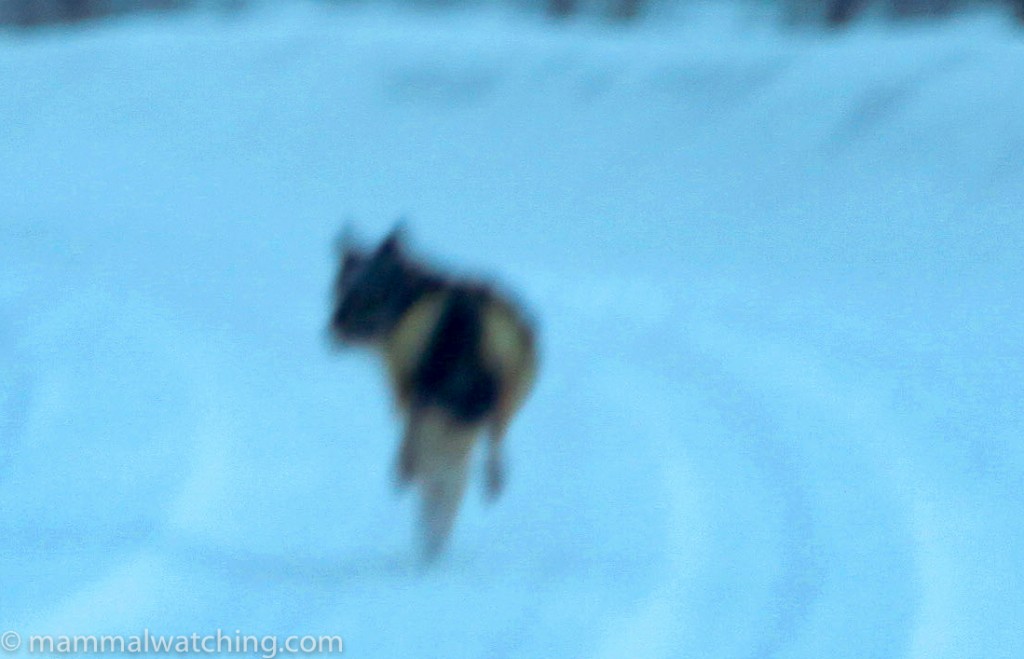
Eastern Wolf, Canis lycaon, at speed and taken through the windshield.
In March 2015 I returned. A Moose carcass had been in front of the visitor centre for 3 weeks before I arrived and hadn’t been touched. The wolves, it seems, had decamped to the village of Dwight to feed on the healthy deer population there. Sure enough I saw a Wolf just south of Dwight on my second morning at dawn.

American Marten, Martes americana
Martens were also easy to see this time. I saw an animal near the start of the Spruce Bog trail. Other animals were being seen regularly at Mew Lake. See my 2015 trip report.
I was back in January 2017 for a day after learning that Fishers and Eastern Wolves were visiting a Moose carcass that the park staff had placed in front of the visitor centre. I saw at least one Fisher, three Eastern Wolves and a Red Fox. This post is a very useful guide to how long carcasses typically stay around.
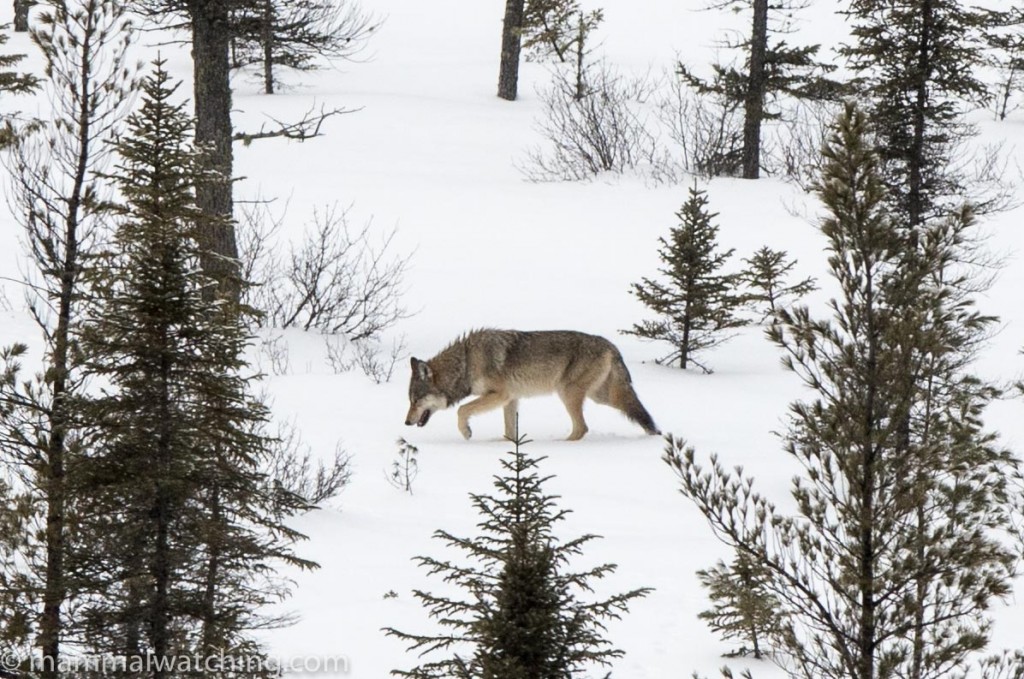
Eastern Wolf, Canis lycaon
Community Reports
Algonquin Provincial Park, 2024: Wildlife Watcher, a few days & 7 species including Fisher and American Martens.
Algonquin Provincial Park, 2017: Jon Hall, 7 hours with Fishers and Eastern Wolves.
Algonquin Provincial Park, 2015: Jon Hall, one weekend with a Marten and an Eastern Wolf.
Quebec, Ontario and a bit of New Hampshire, 2013: Vladimir Dinets, 1 week & 26 species including Star-nosed Mole, Red (Algonquin) Wolf, Marten and Northern & Southern Bog Lemmings.
Also See
Tips for Winter carcass watching in Algonquin Park (January 2017): a day by day guide to what ate a Moose carcass and how long it lasted.
RFI Fishers and Red Wolves (November 2012): some information on Fishers in Quebec and Algonquin.


Leave a Reply
You must be logged in to post a comment.